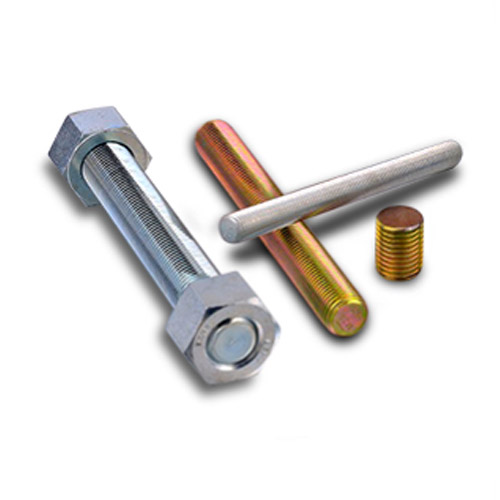flat head self drilling screws
Nov . 30, 2024 03:23 Back to list
flat head self drilling screws
Understanding Flat Head Self-Drilling Screws A Comprehensive Overview
Flat head self-drilling screws are a crucial component in various construction and manufacturing applications. Their unique design and functionality make them indispensable for both professionals and DIY enthusiasts alike. This article will delve into the characteristics, advantages, applications, and considerations regarding flat head self-drilling screws.
What are Flat Head Self-Drilling Screws?
Flat head self-drilling screws are a type of fastener characterized by their flat, countersunk heads, allowing them to sit flush with the material surface. The self-drilling feature means that these screws have a drill-like tip that eliminates the need for pre-drilling pilot holes, making them highly efficient and easy to use. They are typically made from tough materials such as stainless steel, carbon steel, or alloy steel, which enhances their strength and durability.
Key Characteristics
1. Head Design The flat head design is ideal for applications where a smooth finish is required, preventing any snagging or protrusion. The countersunk head allows the screw to be driven into materials without raising the surface, which is particularly useful in woodworking and metalworking.
2. Self-Drilling Tip The unique drill point enables the screw to penetrate and create its own hole in the material. This saves time during installation and reduces the risk of splitting materials, particularly in wood.
3. Thread Design Flat head self-drilling screws typically have deep, sharp threads that ensure a strong grip on substrates. The thread design helps in distributing the load and minimizes the chances of stripping.
Advantages of Flat Head Self-Drilling Screws
1. Efficiency One of the primary benefits of using self-drilling screws is the time-saving aspect. Without the need for pilot holes, installation is faster and more straightforward, making them ideal for large projects where time is of the essence.
2. Versatility These screws are suitable for a range of materials, including metal, wood, and plastic. They can be used in various applications such as metal framing, HVAC systems, roofing, and decking.
3. Cost-Effective Reducing labor costs and time on-site translates to savings for contractors and builders. The efficiency gained from using flat head self-drilling screws makes them a cost-effective choice.
4. Reduced Risk of Material Damage The self-drilling tip significantly reduces the risk of splitting or damaging the surrounding material, which can often occur when using traditional screws that require pilot holes.
Common Applications
flat head self drilling screws

Flat head self-drilling screws are utilized in a variety of industries and applications
- Construction Used extensively in metal framing, roofing systems, and for attaching metal to metal, these screws provide a secure fastening solution that can withstand various environmental conditions.
- Furniture Assembly Woodworkers often use flat head self-drilling screws to assemble furniture pieces, where a flush finish is necessary to ensure aesthetic appeal.
- Electrical Installations They are useful in securing conduits and electrical boxes, making them an integral part of electrical installations.
- Automotive Industries These screws are employed in the manufacturing and assembly of vehicles due to their reliability and strength.
Considerations When Choosing Flat Head Self-Drilling Screws
When selecting flat head self-drilling screws for a specific project, a few factors must be considered
1. Material Type Choose screws made from materials suitable for the environmental conditions they will face. For outdoor projects, stainless steel is often preferred due to its corrosion resistance.
2. Screw Size The length and diameter of the screws should be appropriate for the materials being fastened. A screw that is too short may not provide sufficient grip, while an overly long screw could lead to material split.
3. Application Compatibility Ensure that the screw type is compatible with the intended application. For instance, specific screws may be required for use in metal versus wood applications.
4. Thread Design Different projects may require screws with varying thread designs, such as fine or coarse threads, depending on the material and the application.
Conclusion
Flat head self-drilling screws are a versatile and efficient fastening solution for a wide array of applications. Their design offers significant advantages, including ease of use, speed of installation, and reduced risk of damage. By understanding their features and applications, users can select the appropriate screws for their projects, leading to effective, lasting results. Whether you are a professional contractor or a DIY enthusiast, familiarizing yourself with flat head self-drilling screws can greatly enhance your toolkit.
Latest news
-
High-Quality Panel Stud Bolt Reliable Panel Stud Bolt Factory & Suppliers
NewsJul.08,2025
-
High-Precision Fine Thread Locknuts Manufacturer & Supplier Custom Solutions
NewsJul.08,2025
-
PH Imperial Stud Bolt – High Strength Fasteners from Leading Supplier & Factory
NewsJul.07,2025
-
High-Quality Allen Wrench Bolts Leading Factory, Company & Suppliers
NewsJul.07,2025
-
Wholesale Ball Stud Bolt - High Quality Supplier & Factory Price Reliable Wholesale Ball Stud Bolt Company
NewsJul.06,2025
-
High-Strength Alloy Bolts Manufacturer & Supplier Quality Alloy Fasteners Factory
NewsJul.06,2025
